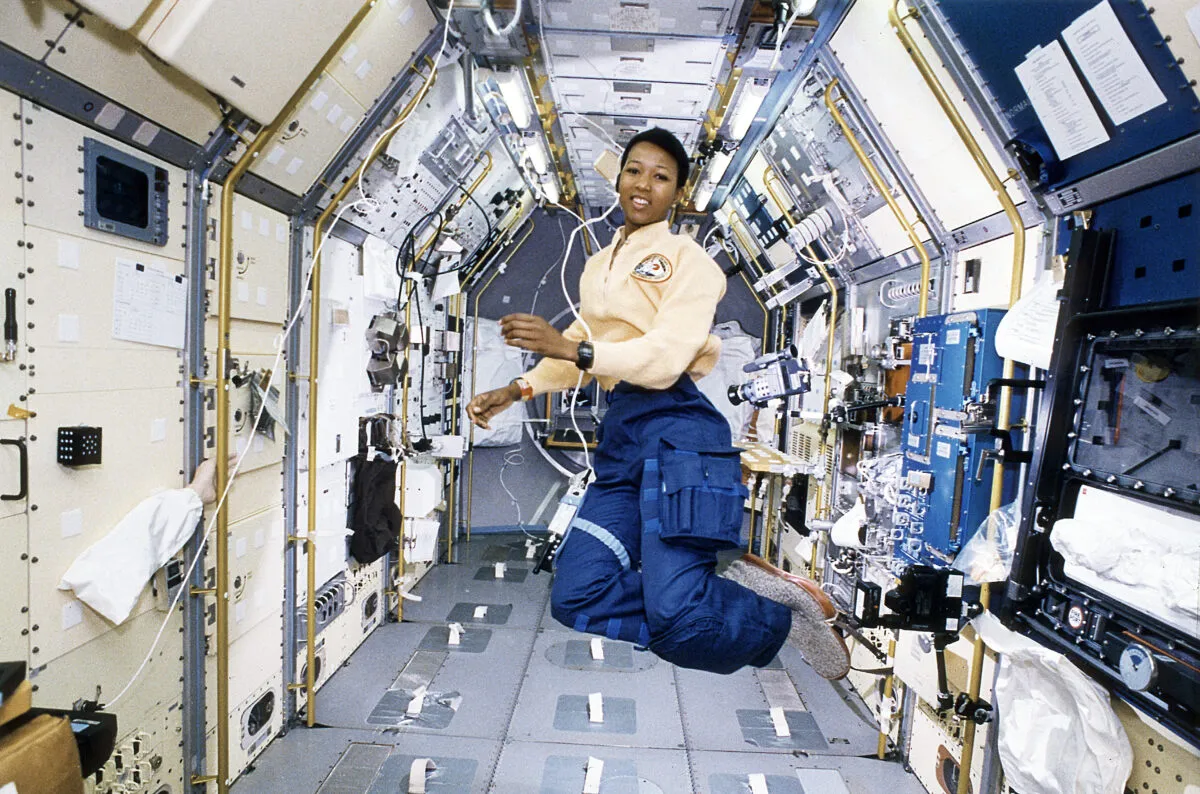When Mae Jemison was 12 years old, she watched enraptured as Neil Armstrong took his first steps across the surface of the Moon during the Apollo 11 landing.
But there was one thing that upset her: none of the people being sent into space looked like her.
Later in life, she would be the one to change that.
On 12 September 1992, Mae Jemison became the first Black woman to fly in space.
- Women astronauts who changed spaceflight forever.
- How long does it take to get to space?

"As a little girl growing up on the south side of Chicago in the ‘60s I always knew I was going to be in space," Jemison said in a 2013 speech at Duke University.
There was, however, one Black female space-farer Jemison could turn to as a role model in her youth, albeit a fictional one: Star Trek’s Lieutenant Nyota Uhura, played by Nichelle Nichols.
Encouraged by her example, Jemison pursued the sciences, eventually attaining her medical degree in 1981.

Mae Jemison's early career
During her early career, Jemison served as a general practitioner and conducted relief work throughout Africa with the Peace Corps
She helped research vaccines with the Centre for Disease Control and, somehow, also found time to learn Russian, Japanese and Swahili.
Then in 1985, Sally Ride became the first American woman to fly in space, rekindling Jemison’s long-held dreams.
"I picked up the phone. Called down to Johnson Space Center. I said 'I would like to be an astronaut'. They didn’t laugh! I turned in the application," Jemison told the website The Mary Sue in 2018.
Jemison joins NASA

In 1987, 2,000 people applied to join NASA’s Astronaut Group 12.15 were accepted, including Jemison.
After completing her training, in 1989 she was assigned to STS-47, a joint mission with the Japanese space agency on which she would conduct a myriad of materials and life science experiments alongside her fellow astronauts.
After a three-year wait, Jemison finally achieved her dream on 12 September 1992 when the Space Shuttle Endeavour blasted off on mission STS-47.
Mae Jemison spent 8 days in space, orbiting Earth 127 times.
As a nod to the woman who inspired her, Jemison would open communications every shift by repeating Uhura’s signature phrase, "Hailing frequencies open".
Keen to represent people who hadn’t been seen in space before, she brought several artefacts with her.
This includeda statue from the women’s society of Bundu in West Africa and a pennant from the first African American sorority, Alpha Kappa Alpha.

Life after NASA
Mae Jemison returned to Earth on 20 September, completing what would be her only flight.
In 1993 she left NASA but continued to advocate for science education, particularly among minority students.
Since then she has founded the Jemison Group Inc, which investigates the social and cultural impacts of technological advancements.
And the Dorothy Jemison Foundation for Excellence (named after her mother) which helps children to develop ‘personal excellence’
Jemison has also taken professorships at Dartmouth College and Cornell University.
Mae Jemison Star Trek appearance
Jemison’s space journey came full circle in 1993 when LeVar Burton, the actor who played Geordi La Forge on Star Trek: The Next Generation, discovered Jemison was a fan of the show and invited her to appear.
She played Lieutenant Palmer in a cameo in the episode Second Chances, the first real astronaut to appear on the show.

Two decades later, in 2012, she took on the task of ensuring the future portrayed on Star Trek becomes a reality, when her foundation was awarded the 100 Year Starship project, an initiative to push forward the progress of human spaceflight to another star within the next 100 years.
"We need to make sure we’re using the full wealth of human talent: across ethnicity, across gender, across geography, across disciplines," Mae Jemison said to PBS’s Nova programme in 2015.
"All the capabilities that are needed for a successful journey to another star system by humans, are all the capabilities that we need to sustain ourselves as humans on this planet.
"And so we believe pursuing an extraordinary tomorrow creates a better world today."
This article originally appeared in the September 2022 issue of BBC Sky at Night Magazine.
